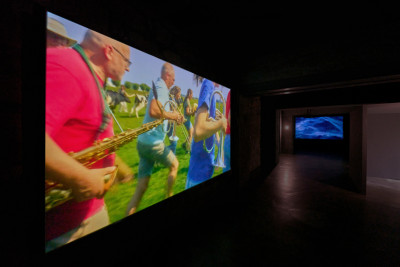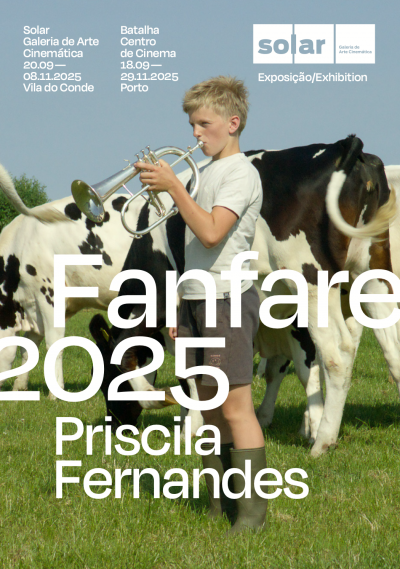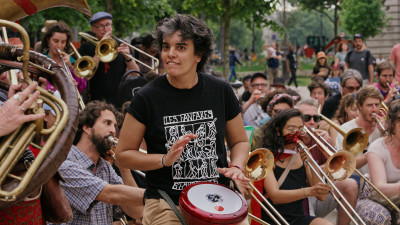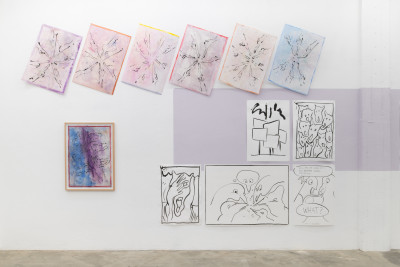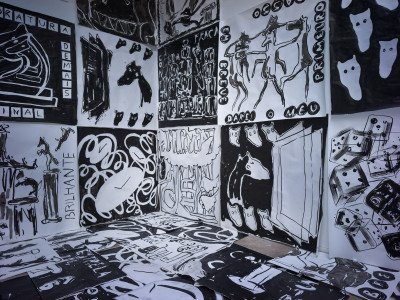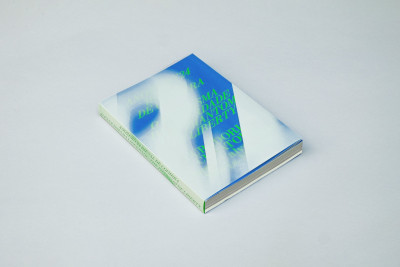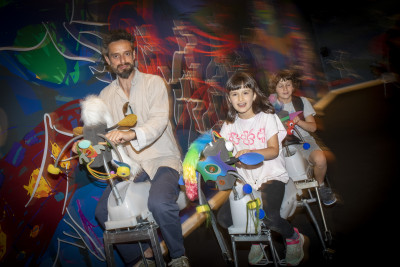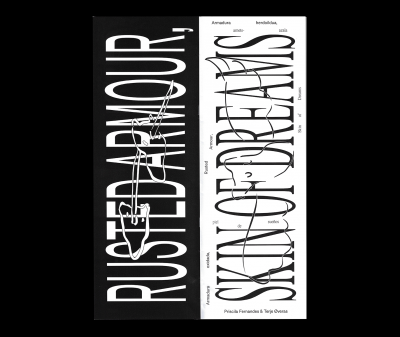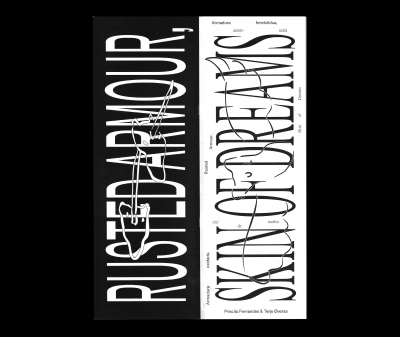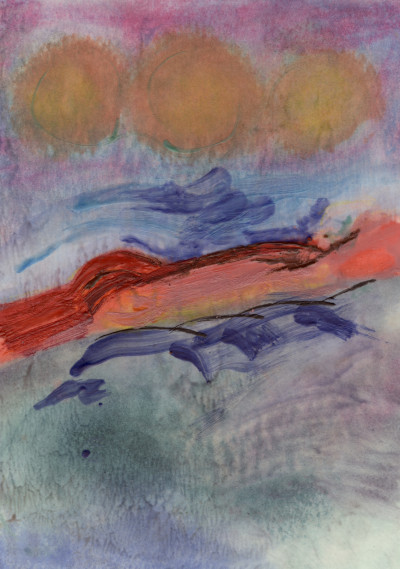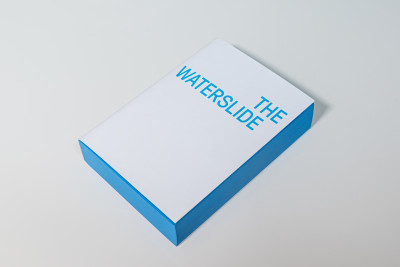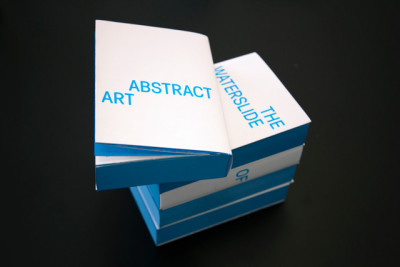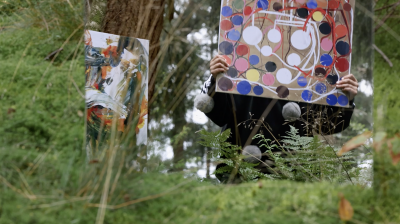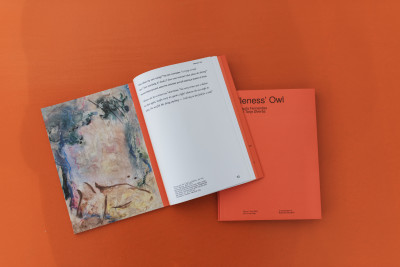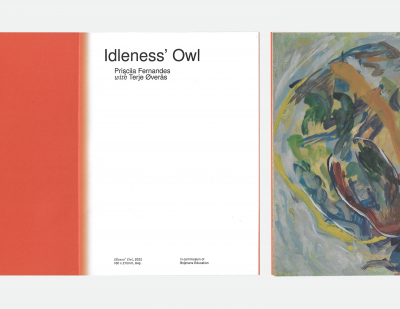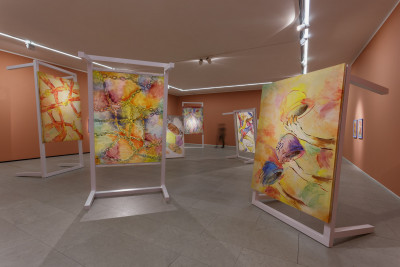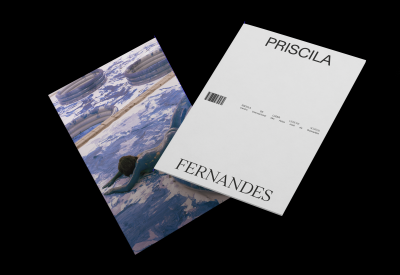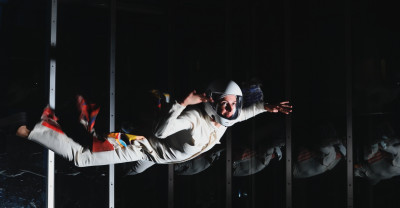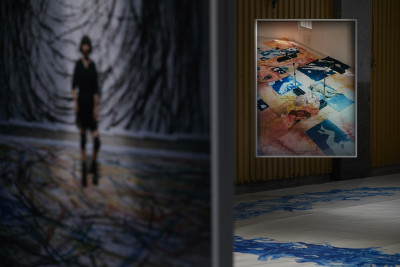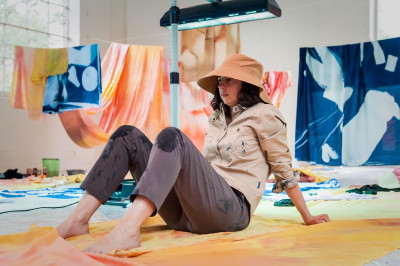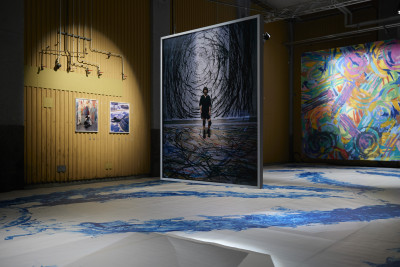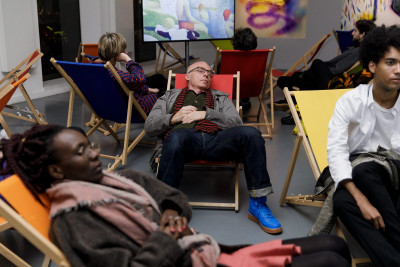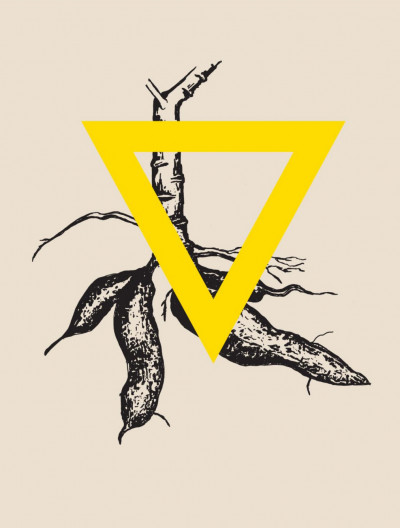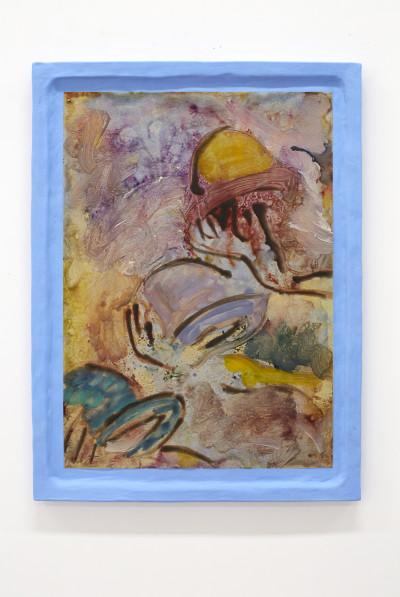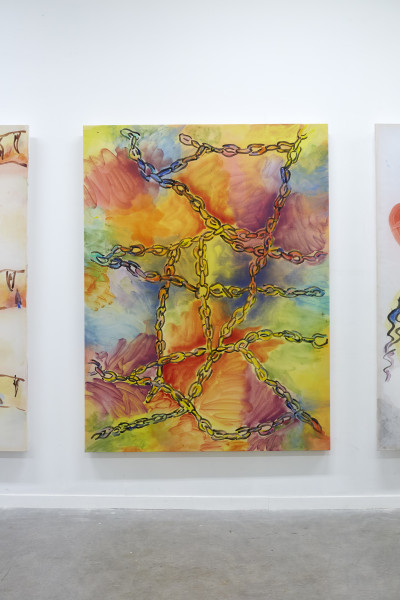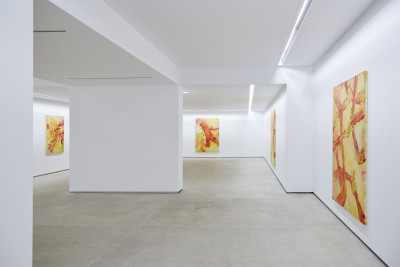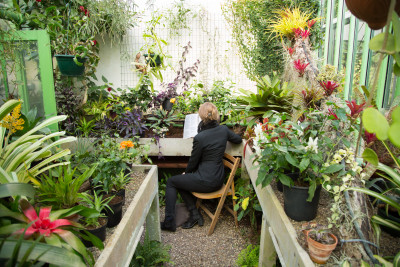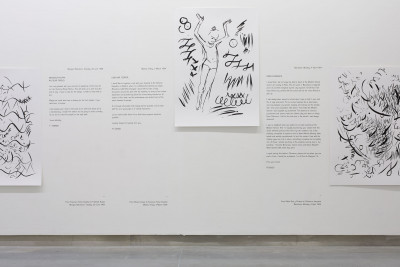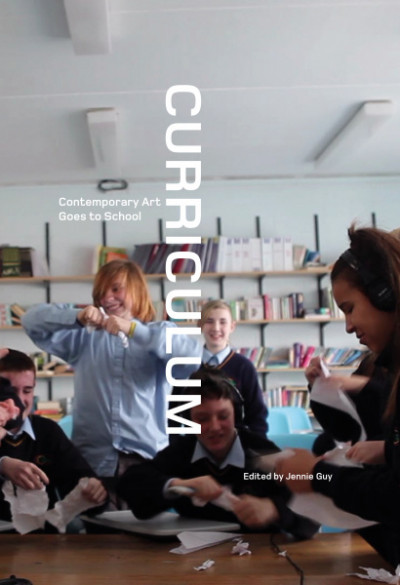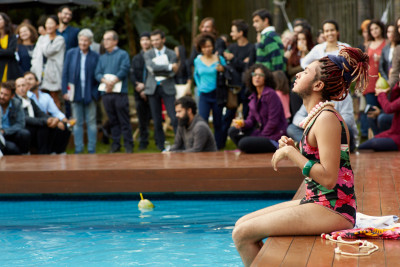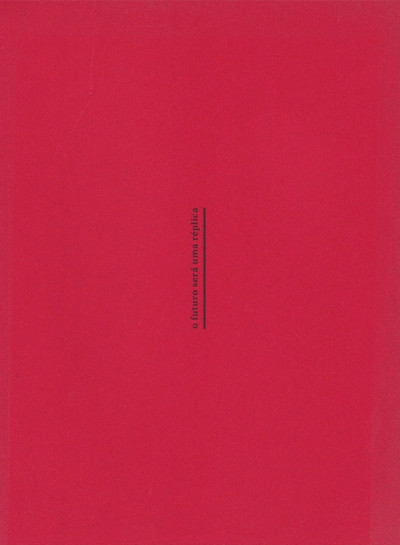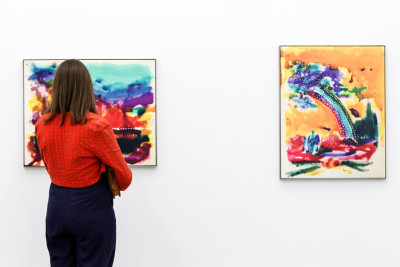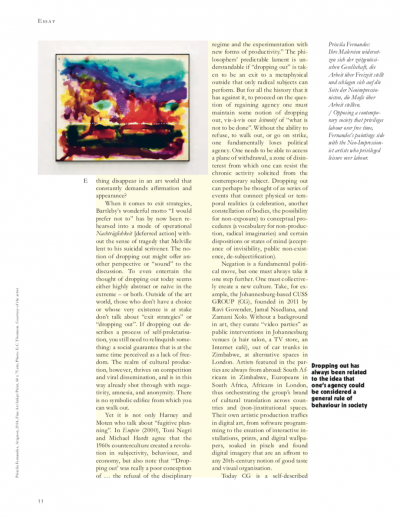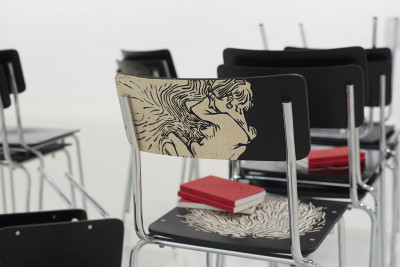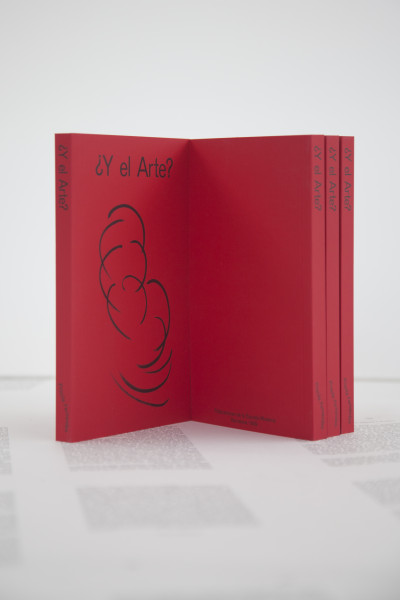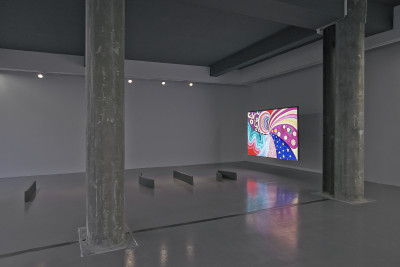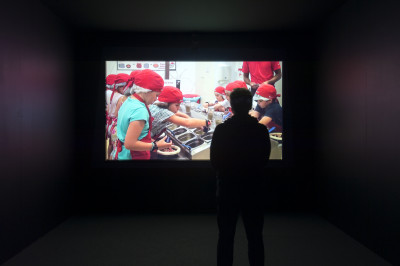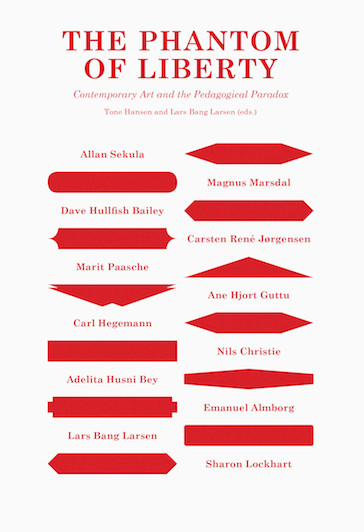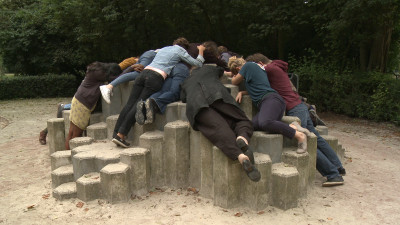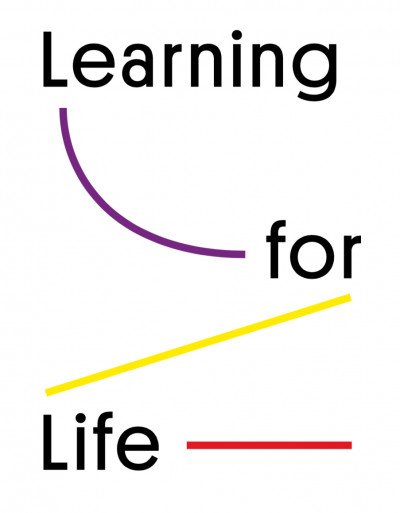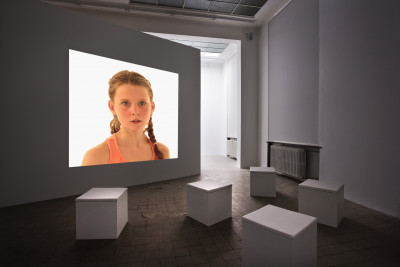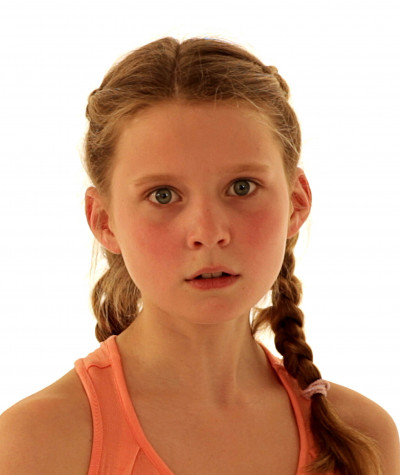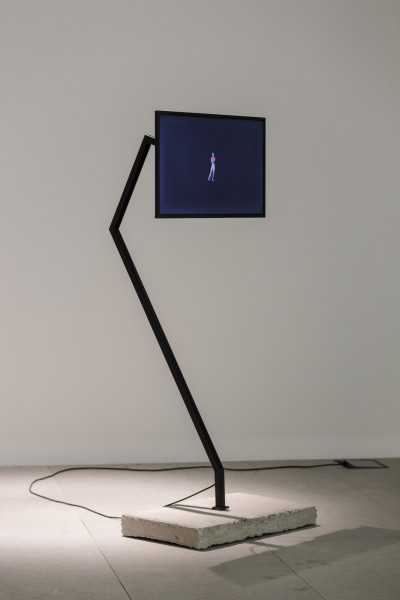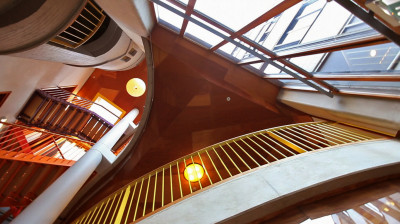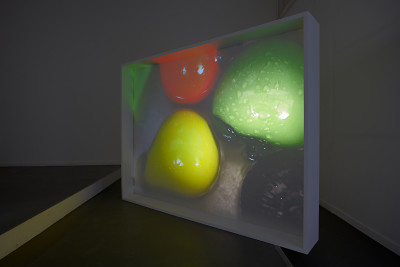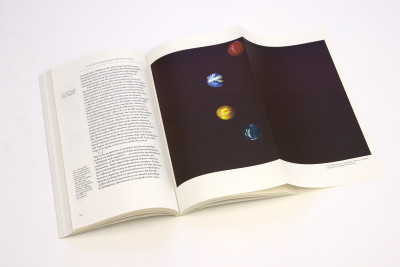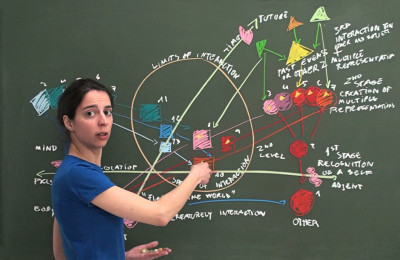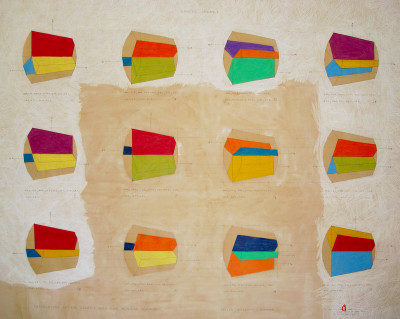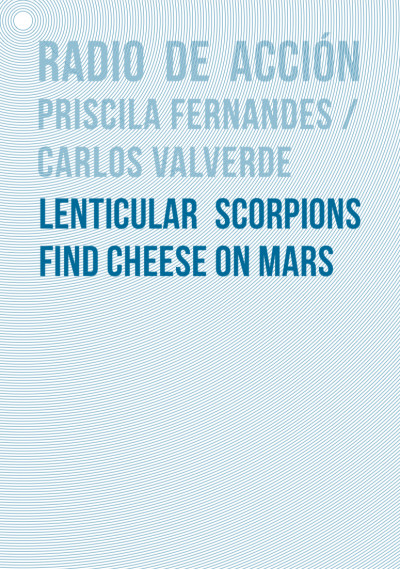Emído Agra
In occasion of the solo exhibition Make it Bounce, Sismógrafo, PT.
Published in 2022
By Sismógrafo
Duchamp is a frog that has lost the ability to jump. Mondrian is a snake that gives yoga classes. John Cage is a mouse that plays chess and is devoted to mushroom foraging. A yoga studio, a video, and a chronology that relates abstract art to leisure. In this exhibition, mushrooms become
musical instruments, the stones on a wall are piano keys, butterflies are born from books. Priscila Fernandes moves in multiple directions. She tells us a story by analogies and uses juxtaposition to create a transitory world where an alternative history is sketched out. Priscila Fernandes plays with modern art myths, entertainment, and the desire to create without restrictions, with a jump that pulls us out of indifference.
In the chronology now published, The Waterslide of Abstract Art, compiled over several years, Priscila Fernandes builds non-identical pairs. A Luna Park, the Titanic, a trampoline that throws our bodies into the air. “Primordial Chaos” by Hilma Af Klint, “Two Moons” by Alexander Calder, “Total Solar Eclipse” by Sarah Morris. These images talk to each other, the truth of one reveals what was hidden in the other. They are moments of modern life, with its materials, shapes, and rhythms. They show us that the same technique that allows us to build a sailboat, a caravan or a Ferris wheel, mechanisms that make us dream, also allows us to build airplanes that drop bombs instead of bringing snow from the top of the mountains to drop it over the city on warm summer days. The cheerful colors of the sails of Daniel Buren’s small boats (“Voile/Toile–Toile/Voile”) contrast with the image of the bombed-out Scheveningen Pier in World War II, now converted into the setting for a jump. Priscila Fernandes’ juxtapositions go beyond comparison, similarities, and differences: the flash of two sep rate forces produces an image saturated with history.
Walter Benjamin insists that we must awaken from the world of our parents. The world that enters the fantasy of our childhood acquires a critical potential when, as adults, we recognize it as an illusion, as a dream. Priscila Fernandes approaches the dream fragments to rescue what has crystallized in them, to decipher forgotten desires, so that we can awaken from the past. She finds our secret history in amusement parks, in spas, in camping, in leisure activities, in the most unexpected places. The world we see in “Make it bounce” is not some other world, but this one perceived in a different way. The artist preserves the mimetic capacity,
that capacity to which Benjamin refers when he says that children, in their games, perceive the world by producing and recognizing similarities: “The child plays at being not only a shopkeeper or teacher, but also a windmill and a train”. Game, mimicry, magic.
The frog Duchamp, the snake Mondrian, and the mouse Cage are keeping a secret. We must bounce to change things; we don’t escape disaster just because we hope: we must act, jump so that we can float in space freely. This world we know is not the only one imaginable. Art can still open a space of freedom, bringing together various times and experiences, preserving difference, insisting on the blind spot where disaster can be stopped. We need a jump that expands the fantasy, that opens us to new cognitive and sensory experiences, that makes us see the world upside down and shows us a multifaceted reality. A jump of a body capable
of resisting cultural domestication. A jump that allows us to break the current of images that saturate our senses, that makes us wake up from the dream of our recent past and show us the true face of the present. Make it bounce, please, make it bounce!
READ MORE...
